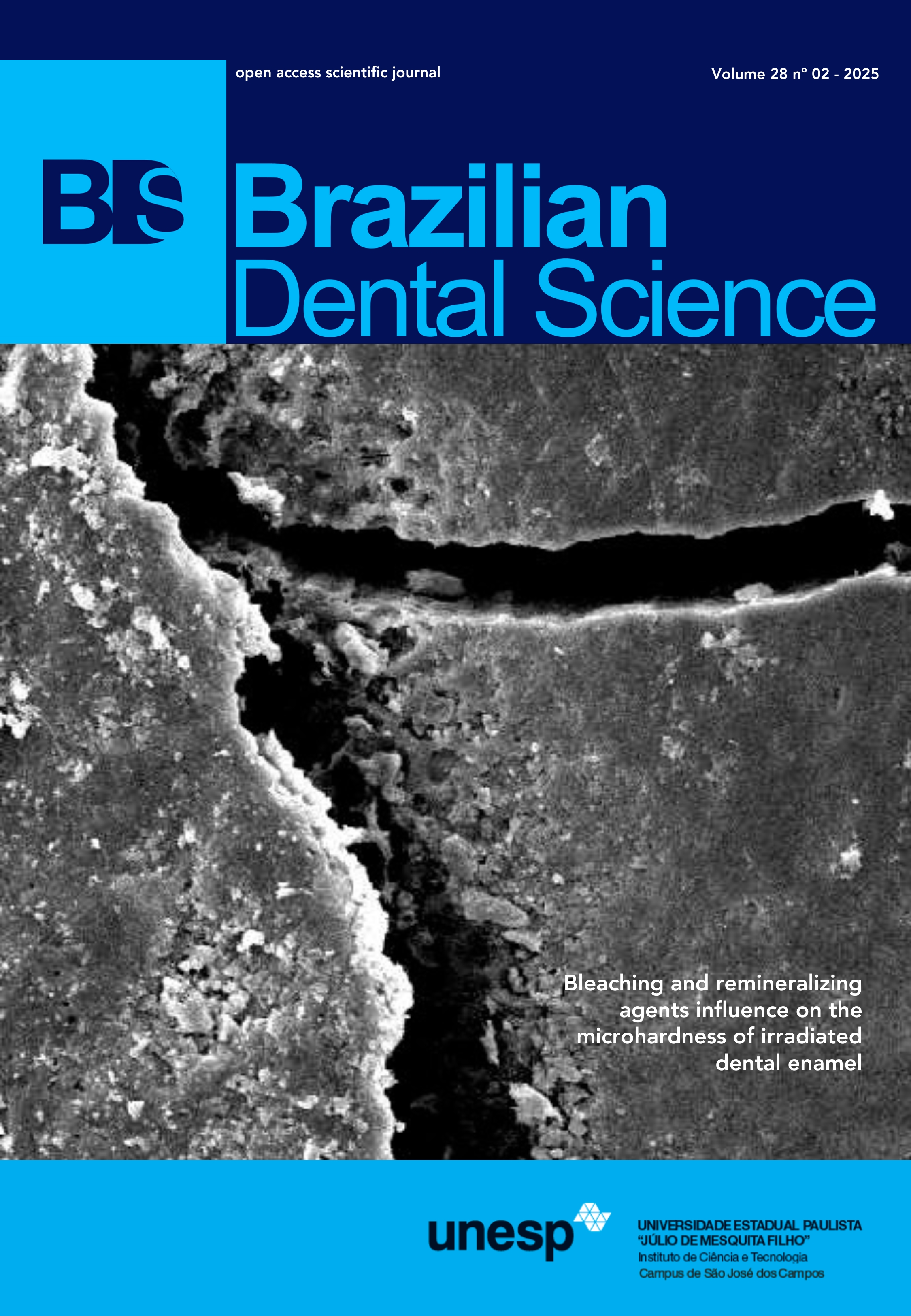Physicochemical and antibacterial properties of ZnO nanoparticles-modified mineral trioxide aggregate hydrated with antibiotic/chitosan solution
DOI:
https://doi.org/10.4322/bds.2025.e4595Abstract
Mineral trioxide aggregate (MTA) modified with ZnO nanoparticles (ZnONP) and hydrated with chitosan solution denoted MTA-ZnO/Ch is a strategy to solve the MTA limitations as a pulp capping material in root canal therapy. MTA materials with high antibacterial activity and antibiotic delivery are being developed. Objective: This study evaluated the effect of various antibiotic additions to MTA-ZnO/Ch on mechanical and antibacterial activities. Material and Methods: The ZnONP, 5% (w/w), was added during preparing MTA, and the resulting gel was calcined at 1000 °C to obtain MTA-ZnO. The MTA-ZnO was hydrated with 4% chitosan in 1% acetic acid solution containing antibiotics (tetracycline, metronidazole, amoxicillin, and ampicillin) at a 1:1 ratio to produce MTA-ZnO/Ch-AB. The properties studied included compressive strength, diametral tensile strength, radiopacity, mass loss percentage, pH change, and antibacterial activity against Pseudomonas aeruginosa (P. aeruginosa) and Enterococcus faecalis (E. faecalis). Results: The synthesized MTA-ZnO/Ch has a compact structure, large surface area, and mesopore distribution with an average particle size of 747.04 nm. Among antibiotics investigated, only tetracycline improved the compressive and diametral tensile strengths of MTA-ZnO/Ch. Adding all investigated antibiotics did not affect the mass loss percentage (except for tetracycline reducing the mass loss), radiopacity, and the pH of the MTA-ZnO/Ch immersed saliva. Except for ampicillin addition against E. faecalis, which did not show antibacterial activity, antibiotics added to MTA-ZnO/Ch improved antibacterial activities against P. aeruginosa and E. faecalis, Conclusion: Adding tetracycline in MTA-ZnO/Ch enhanced physicochemical and antibacterial properties, and it can potentially be a conservative pulp therapy material.
KEYWORDS
Antibacterial; Antibiotics; Chitosan; Mineral trioxide aggregate; ZnO nanoparticles.
Downloads
Published
How to Cite
Issue
Section
License
Copyright (c) 2025 Brazilian Dental Science

This work is licensed under a Creative Commons Attribution 4.0 International License.
Brazilian Dental Science uses the Creative Commons (CC-BY 4.0) license, thus preserving the integrity of articles in an open access environment. The journal allows the author to retain publishing rights without restrictions.
=================




























